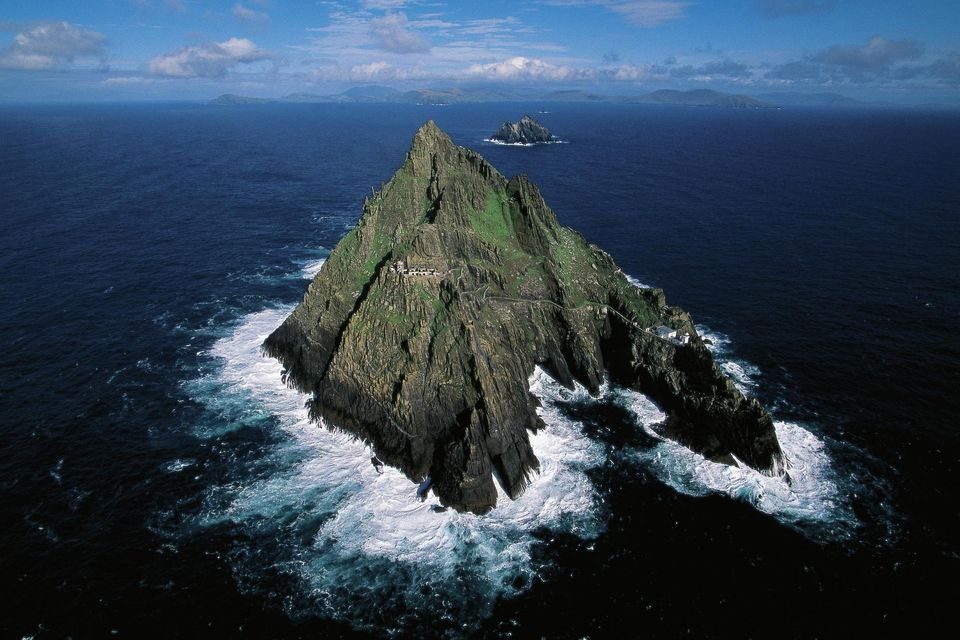Islands, ocean, mountains and wildlife: Ireland’s newest national park is its most diverse
Sceilg Mhichíl, or Skellig Michael, is one of the offshore islands included as part of Kerry Marine National Park, which spans 70,000 acres of widely varying landscape
The country’s newest national park will be a patchwork of places on land, coast and sea, physically separate from each other but linked by a common designation.
A clearer picture of Páirc Náisiúnta na Mara, Ciarraí – Kerry National Marine Park – is now available after further details of its make-up were released.
It takes in 70,000 acres that includes the Conor Pass, Owenmore River Catchment and stretches of blanket bog on Mount Brandon in the centre of the Dingle Peninsula.
Along the coast, it includes Inch Peninsula, Derrynane House and Park, and Derrynane Beach.
Offshore, it covers the islands of Sceilg Mhichíl (Skellig Michael), Little Skellig, Puffin Island and Tearaght Island as well as the prehistoric Tetrapod Trackway on Valentia Island.
At sea, it includes the Kerry Head Shoals, an area of important reefs, and the waters around the Blasket Islands.
It is the first time a national park has been composed in this way and managing it will require co-operation from a range of bodies.
Derrynane, Sceilg Mhichíl and the sites on the Great Blasket are already managed by the Office of Public Works.
BirdWatch Ireland manages Little Skellig and Puffin Island, and the Commissioner of Irish Lights is in charge of Tearaght.
The other sites on land are new acquisitions and will come under the control of the National Parks and Wildlife Service (NPWS).
The NPWS is to have overall responsibility for the park but said it would work with the other organisations in a partnership approach.
“Our new park is a celebration of heritage in all its forms,” said Niall Ó Donnchú, NPWS director general.
Heritage Minister Malcolm Noonan said the park would bring together some of the most ecologically valuable and archaeologically significant landscapes in Europe.
“Encompassing mountains, blanket bog, heaths, rivers, coastal dunes, limestone reefs, sea cliffs and some of the wildest and most biodiverse land and seascapes in the country, our new national park is nothing less than a celebration of nature and Irish wildlife,” he said.
He stressed, however, that any of the lands that had commonage would continue to be available for grazing.
Farmers would be invited to take part in restoration programmes but participation would be voluntary.
Two lighthouses are being brought into the park – Inishtearaght and Sceilg Mhichíl Lighthouse, which date to 1870 and 1820.
Derrynane House and Park, ancestral home of Daniel O’Connell, is also in the designation.
Other man-made features include the medieval monastic settlement on Sceilg Mhichíl. The most spectacular features are provided by nature, including extensive dunes, rugged islands and species-rich seas.
The Fair Seas environmental coalition welcomed the park’s creation, but said it would continue to campaign for marine protected areas to be declared on 30pc of Ireland’s marine environment by 2030.
“It is vital that this area, its rich habitats and species are preserved for future generations,” said spokesman Jack O’Donovan Trá. “National Parks, as guardians of nature, aim to do that.
“However, we believe properly resourced and effectively managed marine protected areas will go even further.”
Join the Irish Independent WhatsApp channel
Stay up to date with all the latest news















